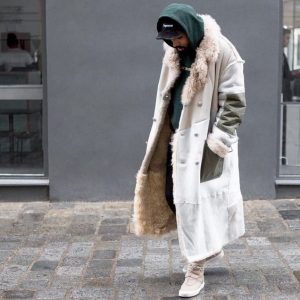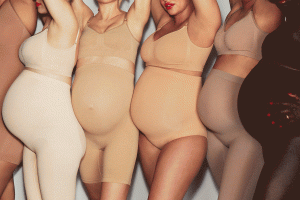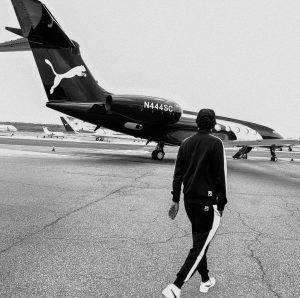Ads on YouTube, Facebook and Instagram are today deemed the most annoying.
This is according to Business Insider Intelligence’s recent Digital Trust Survey.
Why?
Well that’s simple.
People don’t like being advertised to, especially when they want to scroll and find new inspiration from their favourite bloggers, escape for 10 minutes on a lunch break, play the latest Justin Bieber music video, or see what those they love have been up to.
It’s irritating, and a primary barrier to what they are on the platform to see, and experience.
The results of this survey should come as a wake-up call to marketers and brand owners alike still unsure about native content, or focussing more on the natural, stripped back approach to marketing vs the glossy magazine cover-esque pieces of creative.
So, what’s the solution?
Based off our recent results across our brand partnerships and client portfolio, the fuel for the most recent ROI experienced has been user generated content.
In the last 3 months especially, this has been the primary driver behind results both on an engagement, organic level, but also on the paid advertising front.
Our ethos is simple, and the types of conversations we have been having recently looks a little like this..
Integrate with content your target customers love to see, and be a part of the reason they are on the platform.
Be native.
Don’t be a 1990’s yellow pages advert plastered in the middle of an Instagram feed.
You’ll lose out.
If your marketing is in a designated advert, in between your target customer and the content they want to watch, undoubtedly it will be glanced over or not given attention. Your CTR will be sky high, even on the editorial you spent hours on end in a studio developing, tweaking and editing.
Not to mention the cost for producing your glossy ad.
It just won’t generate interest, and your marketing spend will be wasted because you are going against your consumers’ psychology and frame of mind at that given moment.
Integrate your message into user generated content, and become an intrinsic, flowing piece of the platform experience.
Here’s our top reasons why UGC is the way forward for brands that want to scale:

1. It’s the human touch
As above, people don’t want to be advertised to. They don’t want to be bombarded by marketing messages and they most certainly don’t want your ad interfering with their user experience on Instagram, Facebook or YouTube.
User generated content goes against ‘marketing’.
It’s a natural, aesthetically on point piece of content that creates a feeling.
A feeling that is in line with who your customer wants to be, how they want to feel, and the desire they have when it comes to the ‘why’ they would buy from your brand.
Here’s the thing: People trust people.
People want to relate with people.
This has been one of our key mantra’s when it comes to strategy calls of late with our clients, especially those in the fashion space.
Those that have adopted this strategy and nailed in on the UGC space to their advantage, have seen all time high conversion rates and revenues reported for the months of July and August consistently.
Instead of scrolling through websites that only tell you their ‘halo’ version of the product, people now prefer a natural, vibey conversation coming through from what they see from brands.
What they crave, essentially, is the human touch to an otherwise lifeless, staged, over-edited piece of content. UGC content provides precisely that – the human element.
It shows the product for what it is, the brand for the feeling they create with a no holes barred approach, and the customers for the community they generate.
Seeing a similar person to you, or a respected influencer wearing the new line is the best way to demonstrate your product to would-be-buyers. It’s the pairing of valuing perspectives of their fellow customers, hand in hand with an unfiltered view of your product in a real world use, often in a real world environment.
This is what UGC provides your brand: The much needed, and much desired help that prospective customers understand the product inside and out, and they get to know what to expect before they even land on the product page.

2. Customer Experience Is Accentuated
Consider that you have been using the same angles of content for the past 6 months.
Your ads may very much be experiencing ad fatigue, because your product only shows so much.
It shows one angle, repeatedly: Your angle as those behind the brand day to day.
You have yet to mix this up and twist things into the angle you really need to be portraying as priority: Your customer’s view when they have the product.
When this switches up, your intended customer will see something a little like this…
They open up Instagram, scroll along and then get hit with a native ad that speaks the same language as those in which they follow, almost as if the ad they are seeing has been posted by one of their close friends.
Immediately they have minor emotions tied into the creative, and they are getting a sense of feeling with your brand.
The piece of content shows your brand in a native and natural form, and in a way studio content just cannot relay in the same way.
Suddenly, the product has new life to it, a new portrayal, and a new value proposition in the eyes of your consumer.
A different view, creates different reactions.
They are now viewing someone experience the product in real life and validate all its claims, as opposed to just hearing them.
In short, your consumer is already experiencing the product, and in turn they get convinced that it’s as good as you say it is, and it does exactly as what that customer would expect from a product.
User-generated content adds a dash of authenticity and reverberates with the customer in the most natural form.
It’s a buying accelerator like no other.

3. It Converts
User generated content drives sales like no other.
When people see for themselves how a product has impacted the life of someone else, and someone they identify with, they begin to find ways the product can help them, and starting selling the product to themselves.
In turn, this creates a higher CTR and traffic generation from this type of content compared to any other because it’s so identifiable.
The metrics align perfectly for any brand looking to scale, because UGC generates interest and more ‘scroll stopping’ than an ad that doesn’t look like it belongs.
It’s why people skip the adverts immediately when they come on T.V. between their favourite show – they know it’s not going to be relevant or personally tailored to them.
It’s another annoying barrier before they get to what they really want to see, and the reason why they are watching T.V. in the first instance.
However, if those adverts were people you adored and identified with showing off their latest buys in the most natural way, you may just hear them out.
Brands get far more bang for their spend, because their spend isn’t being wasted on people scrolling past, but rather the spend on the content is now getting clicks, and clicks create conversions.
You may end up buying something you do not need at all, or find something you may have passed up on initially, because it directly impacted you on an emotional level – it’s not just another advert.
User-generated content consciously and subconsciously alters buying patterns and increases eCommerce sales twofold with brands who have lacked in that department historically.
Every marketing metric that aligns to sales, rises in all the right areas, and it’s clear to see why.





















